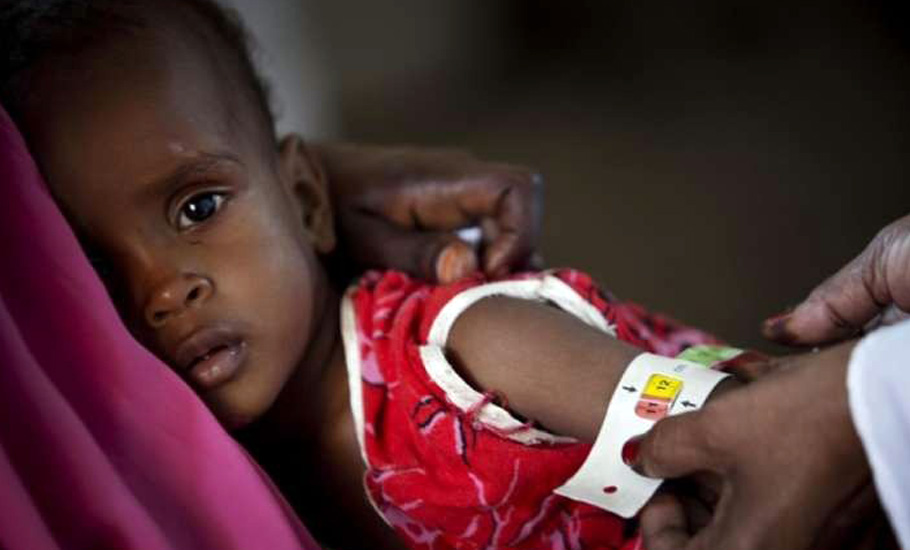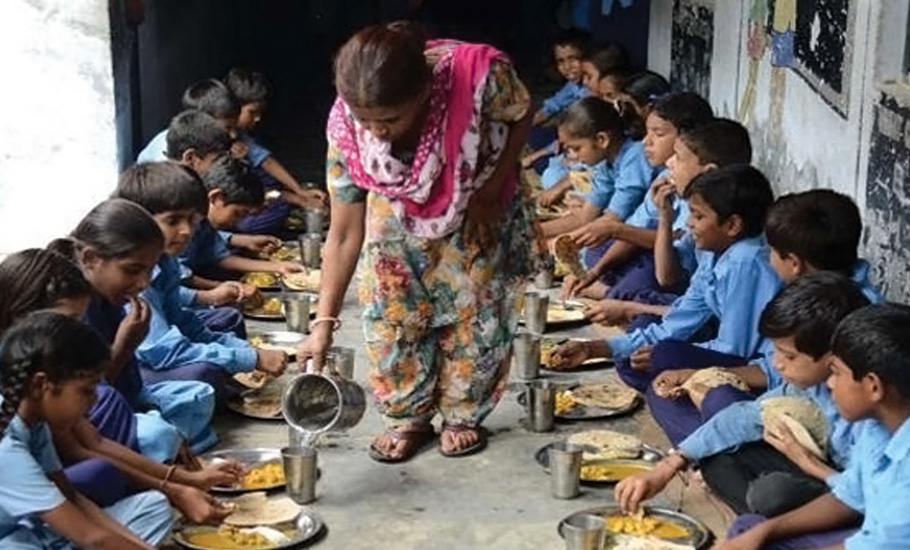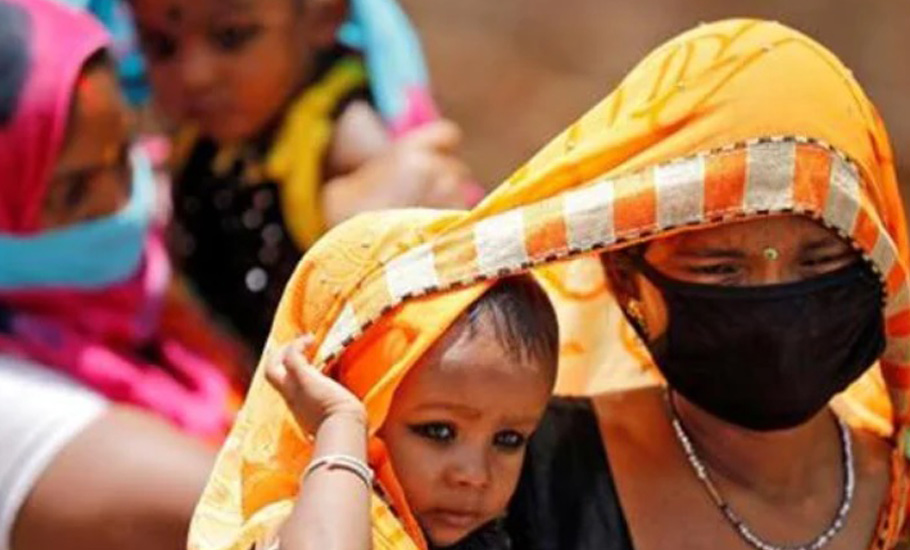
- Home
- News
- Analysis
- States
- Perspective
- Videos
- Education
- Entertainment
- Elections
- Sports
- Features
- Health
- Budget 2024-25
- Business
- Series
- Bishnoi's Men
- NEET TANGLE
- Economy Series
- Earth Day
- Kashmir’s Frozen Turbulence
- India@75
- The legend of Ramjanmabhoomi
- Liberalisation@30
- How to tame a dragon
- Celebrating biodiversity
- Farm Matters
- 50 days of solitude
- Bringing Migrants Home
- Budget 2020
- Jharkhand Votes
- The Federal Investigates
- The Federal Impact
- Vanishing Sand
- Gandhi @ 150
- Andhra Today
- Field report
- Operation Gulmarg
- Pandemic @1 Mn in India
- The Federal Year-End
- The Zero Year
- Premium
- Science
- Brand studio
- Newsletter
- Home
- NewsNews
- Analysis
- StatesStates
- PerspectivePerspective
- VideosVideos
- Entertainment
- ElectionsElections
- Sports
- Features
- BusinessBusiness
- Premium
- Loading...
Premium - India-Canada ties

Pandemic-deepened malnutrition in Bihar presents far-from-perfect picture

To mark Prime Minister Narendra Modi’s 71st birthday, which the BJP extended to a 14-day celebration under Seva Aur Samarpan Abhiyan (service and dedication mission), Bihar’s industries minister Shahnawaz Hussain decided to distribute food among the poor. As the shutterbugs closed in on the ‘seva’, Hussain asked people with ‘big bellies’ to step back and those with ‘smaller...
To mark Prime Minister Narendra Modi’s 71st birthday, which the BJP extended to a 14-day celebration under Seva Aur Samarpan Abhiyan (service and dedication mission), Bihar’s industries minister Shahnawaz Hussain decided to distribute food among the poor. As the shutterbugs closed in on the ‘seva’, Hussain asked people with ‘big bellies’ to step back and those with ‘smaller ones’ to step forward. Picture perfect. Bihar’s far-from-perfect pictures, however, abound in people with big bellies, swollen, in fact, from kwashiorkor – a severe form of malnutrition.)
The Covid-19 pandemic, it now appears, has added to the list of those who would have to step out of Hussain’s frame in Bihar.
A joint study undertaken in 2020 by Asian Development Research Institute (ADRI), United Nations Children’s Fund (UNICEF), and Bihar finance department, to understand the socio-economic impact of Covid-19 pandemic on children in Bihar pointed that children and women, especially those pregnant or lactating, are at an increased risk because their nutritional needs are not being met as families cope with loss of incomes.
“Bihar government’s decisions like providing cash assistance in lieu of mid-day meals and facilities like ‘take home ration’ from ICDS (Integrated Child Development Services) and additional ration provisions from PDS are all helpful but these initiatives have been inadequate,” the study noted.
How the pandemic snatched nutrition
According to Bihar Economic Survey 2020-21, the mid-day meal scheme covered 71.75 lakh students of primary school and 35.68 lakh students of upper primary school in 2019-20. On an average, the mid-day meal scheme covers 63.67 per cent students from class one to class five and 59.74 per cent for students from class six to class eight.

The meals largely meet the nutritional needs of children in Bihar but the closure of schools meant stalled access to nutrition for children.
Asha Devi, a native of Digha in Patna district, who works as a casual labourer, said that mid-day meals took care of nutritional food of her 10-year-old son but he became weak after the school closed down following the outbreak of the pandemic.
“Our agonies only multiplied when my husband, a migrant worker, returned to the village after he lost his job in a Delhi factory,” she added. Asha Devi said she somehow managed to provide her son some nutrients by increasing his intake of green vegetables.
The other factor that proved to be a setback for Bihar’s efforts to fight malnutrition was the absence of community health workers such as Accredited Social Health Activist (Asha) and Anganwadi workers. Both Asha and Anganwadi workers were overburdened with Covid-19 duties that left them with no bandwidth to focus on nutritional programmes.
Ensuring nutritional intake requires door-to-door visits from community health workers who counsel families about the importance of nutrition. It requires more convincing to ensure pregnant and lactating women to eat healthy. These community workers also ensure that food and supplements meant for the population at risk of malnutrition reaches them. These ground-level activities could not be carried out following the outbreak of the pandemic.
An Angawadi worker, Seema Kumari, working at Anganwari Kendra in Phulwari Sharif, on the outskirts of Patna, said that children have had no access to nutritious food as she and other workers were engaged in Covid-related work. She said after the lockdown was lifted, Anganwadi Kendras are gearing up to take care of nutritional needs of children and make up for the losses suffered due to the pandemic.
A government doctor posted at Tarari community hospital in Bhojpur district of the state, who did not want to be named, confirmed a rise in the number of children suffering from malnutrition visiting his hospital. The doctor said children have been deprived of nutritious food due to non-availability of mid-day meals, closure of Anganwadi Kendras and loss of jobs for parents due to the pandemic.
Dr Barna Ganguli, a specialist in the social sector at ADRI, Patna, concurs. Ganguli said following the outbreak of Covid, the attention of authorities shifted to the management of the pandemic. She said that money transferred to the poor to buy supplements for children and pregnant women was mainly used for buying cereals and other household essentials.
While efforts have been made to increase the level of exclusive breastfeeding through several strategies under the national programmes and policies including Prime Minister’s Overarching Scheme for Holistic Nourishment (Poshan) Abhiyan, the pandemic has proved to be a severe setback to all such efforts. The Poshan Abhiyan, which is targeted at meeting the nutritional needs of children under six and pregnant and lactating women, was disrupted across Bihar following the pandemic.
Neeraj Kumar, a social activist in Nawada district, said the Poshan Abhiyan was hit in his district due to the lockdown as many beneficiaries were deprived of access to nutritious food. Reena Devi, the mother of a malnourished six-year-old child, sees a ray of hope in the gradual reopening of Poshan Punarvas Kendra. Reena, a domestic servant, said she could not afford to provide nutritious food to her child during the lockdown but is now relieved that the centres are functioning again.
A critical problem faced during the pandemic was the absence of Asha workers in giving consultation to pregnant and lactating mothers and their family members as they were diverted to other pandemic management related work.

A nutrition expert and assistant professor in Patna’s Ganga Devi Mahila Mahavidyalaya, Dr Vidya, said the access to nutritious food has become more difficult. Since children had no access to mid-day meals as schools and Anganwadi Kendras were closed following the outbreak of pandemic, the problem of malnutrition among them only worsened, she added. Vidya also offers a solution.
“We should grow vegetables and fruits at the vacant places around our houses and even on rooftops so that our nutrition needs can be met,” she said emphasising on the need to build awareness around malnutrition.
How serious is Bihar’s malnutrition crisis
Bihar is the third most populous state in India with 47 million children. Put another way, Bihar’s children constitute 11 per cent of India’s population.
State health minister Mangal Pandey recently told Bihar’s Legislative Council that 41 per cent of these children are underweight and a staggering 63.5 per cent of children in the age group of six months to five years are anaemic.
According to National Health Family Survey-5 (2019-20), more than 42 per cent children in Bihar are victims of severe malnourishment. Similarly, 58 per cent of pregnant women in the state are anaemic. As per NFHS-5, neonatal mortality rate (per 1,000 live births) has been recorded at 34.5 against 36.7 (NFHS-4). The national average in 2019 stood at 22.
Nutrition specialist at UNICEF (Bihar), Rabi Parhi, said the data that is available for Bihar is pre-Covid but evidence from across India suggests there is a huge disruption in the health and nutrition service provisioning from different platforms and departments.
“The malnutrition crisis has only deepened in the absence of essential services as well as due to the Covid-induced food insecurity. So, we can safely assume that the situation that has been depicted in NFHS-5 has only worsened,” Parhi added.
The pandemic has dealt a setback to Bihar’s malnutrition statistics that were just beginning to improve marginally for some indicators. The infant mortality rate had declined to 46.8 (NFHS-5) from 48.1 (NFHS-4 – 20015-16). Similarly, under-five mortality declined from 58.1 to 56.4 between these two surveys. There has also been a rise in the number of children under age six months being exclusively breastfed from 53.4 per cent to 58.9 per cent between the two surveys. Additionally, the number of children between 6 and 8 months receiving solid or semi-solid food and breast milk increased from 30.8 per cent to 39 per cent.
Giving yet another dimension to the crisis, UNICEF official, Parhi said in many cases, mothers infected with the dreaded virus are reluctant to breastfeed their babies even when the virus has not been reported in the breast milk of infected mothers.
But unfounded apprehension dominates the minds of infected mothers, depriving their babies of breastfeeding, so crucial for their immunological system, he added.
Parhi said babies conceived before the outbreak of the pandemic (around 2019 or early 2020) have been deprived of nutritious intake in their crucial formative years. He said if they continue to face the same fate after their birth for two years, it will leave an adverse impact on their immune system, making them more vulnerable to infections. Pregnant women too had no access to adequate nutritious food due to the lockdown, adversely impacting their health, the official noted.
Punam Kumari, a home-maker living in the state capital`s Kankarbagh Colony, said that her husband, an engineer with a real estate company, lost his job due to the pandemic.
As the family was forced to dig into its savings, Kumari said that they were left with no option other than cutting down expenses on everything, including food, “Earlier, we used to have non-veg food every week but now it has reduced to once in a month,” she added.
What the government is doing
Bihar health minister Mangal Pandey said his department has set up ‘Poshan Punarvas Kendra’ under the National Health Mission in 38 districts and three medical college and hospitals.
In a bid to address the problem of anaemia among pregnant women, the state government is providing 180 iron-folic acid tablets six months before delivery and 180 tablets after delivery, he added.
Altogether 74 per cent of pregnant women in Bihar have been provided with folic acid tablets to combat anaemia, claimed a health official who did not wish to disclose his identity.
He said health cards have been issued to 1.22 crore children up to 18 years, offering supplementary medicines to deal with severe malnutrition.
It remains to be seen how effective these measures prove in the fight against malnutrition.

